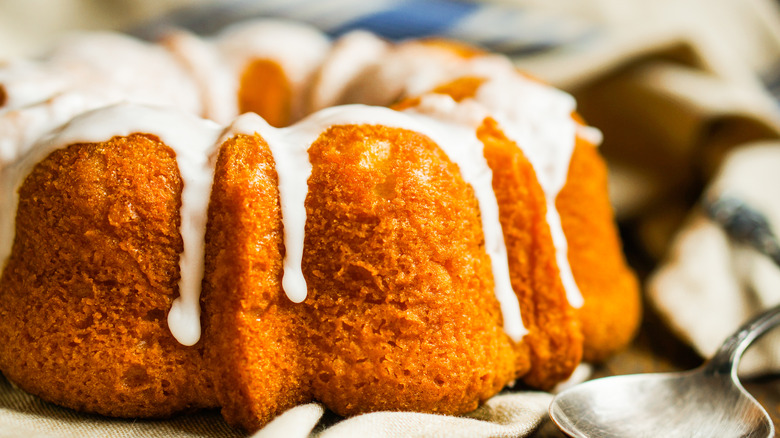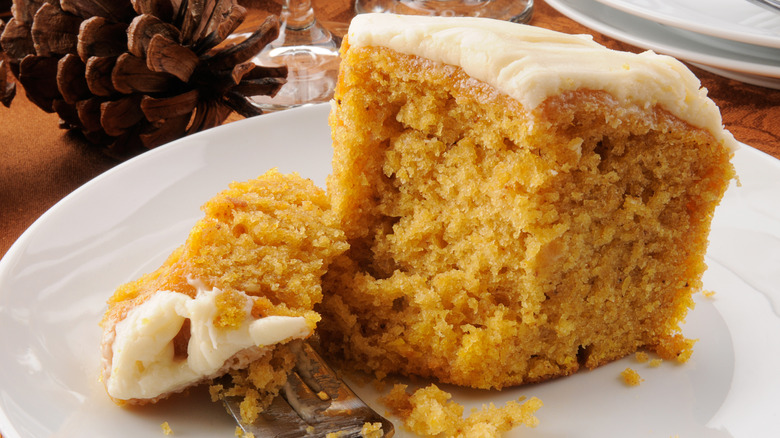The Unexpected Ingredient You Need For Extra Moist Pumpkin Cake
As a seasonal flavor, pumpkin is most often paired with warming spices in the form of a pie or latte. But when used in a cake or muffin recipe, pumpkin tends to make the texture gluey and dense. This is due to the water content of the pumpkin purée. When we make cake we want it to be moist and not dry, but too much moisture doesn't work. Pumpkin cake should be fluffy, light, and airy like any other delicious sponge cake.
Baking is a science, and it's helpful to know why a cake turns out dense or gluey, so you can avoid making the same mistake in the future. If you're creaming your butter and sugar properly at a medium speed then adding your flour at an even lower speed, you're less likely to get a gluey, too-dense cake. But sometimes, like in the case of pumpkin cake, it comes down to using certain ingredients to off-set the higher moisture content. Surprisingly enough, potato flour will do the trick.
Potato flour ensures a moist cake
Due to the high moisture content of pumpkin cake, you need to find ways to mitigate that dense sponge. Potato flour (not potato starch or flakes, there's a difference) can come to the rescue. All you need is a spoonful and your pumpkin cake will come out moist, but not too dense. It also has the added benefit of making baked goods last a bit longer than if no potato flour was used.
Potato is used in baking all the time; it's how we get super moist potato buns for burgers, or deliciously tender dinner rolls for your Thanksgiving feast. It retains moisture so well because as a starch, it binds with the liquids in the batter or dough to create a moist final product. When using potato flour, don't add too much, one tablespoon in a standard cake recipe should be enough to do the job.
More tips on how to bake a moist, airy cake
Potato flour is an excellent ingredient to use in moist cakes and breads, but there are other ways to ensure your cakes are light and fluffy instead of dense. The most obvious advice is to not over-mix the batter, as that will develop too much gluten and result in a gummy cake.
Another tip is when the recipe calls for it, use cake flour. Cake flour's lower protein content and super-fine consistency means the cake will have a fine crumb compared to using all-purpose flour. It is possible to substitute cake flour for all-purpose flour and vice versa, but the texture and airiness will be a bit different, so be aware of that.
Lastly, don't over-bake the cake, and keep an eye on the time, temperature, and tin size. Cakes can over-bake in minutes, especially when using different sized tins than what a recipe calls for; smaller tins will bake far more quickly than larger ones. If you're unsure, use the toothpick test to judge a cake's doneness.


